Serving Islam and Humanity: A Study on Zainuddin Makhdoom II’s Pluralist Model of Social Services
In today’s fragmented socio-political context, models of peaceful coexistence rooted in religious traditions are increasingly vital. Among them, the legacy of Zainuddin Makhdoom II stands out as a compelling example from Indian history. As a Sufi scholar and reformer from Malabar, his life and works reflect a deep commitment to interfaith harmony and inclusive social service.
The concept of pluralism holds that diversity benefits society and that autonomy should be enjoyed by distinct functional or cultural groups, including religious communities, trade unions, professional bodies, and ethnic minorities[1]. Both pluralism and interfaith harmony are vital pillars of Indian society and are highly relevant in contemporary life. In a pluralistic society like India, these values reflect a deep-rooted love and respect among different religions, supported by the Indian Constitution, which guarantees every citizen the right to freely choose and practise their faith[2].
India's pluralistic character, marked by centuries of communal and cultural exchange, has been significantly shaped by Sufism. Rooted in spiritual introspection and public service, Sufism fostered compassion, tolerance, and social cohesion across religious boundaries. Through figures like Pīrs, Fakirs, and Qutbs, Islamic mysticism played a key role in the spread of Islam in the subcontinent—not through conquest, but through moral example and community engagement.
Zainuddin Makhdoom II embodied this legacy. His contributions extended beyond scholarship into active societal involvement, offering a pluralist framework grounded in Islamic ethics. This paper explores how his teachings and initiatives advanced communal unity and public welfare, offering valuable insights for contemporary interfaith and social discourse.
Zainuddin Makhdoom II
Kerala, now known for having the highest literacy rate in India, achieved this status through persistent struggle and reform. As Zainuddin Makhdoom II notes in Tuhfat al-Mujāhidīn, Kerala was a primitive and backward society at the time of Islam’s arrival. Even the dead were left to animals rather than being buried or cremated[3], an observation also cited in "Caste System and the History of Kerala" by P.B. Balakrishnan. History shows that whenever humanity faltered, Allah raised reformers to restore balance. According to Muhammad Shafi A.K., the arrival of the Makhdooms from Yemen marked the beginning of Kerala’s Islamic golden age[4].
Zainuddin Makhdoom I, the pioneering reformer, introduced the Dars system at Ponnani Juma Masjid, laying the foundation for structured Islamic education in Kerala. His grandson, Zainuddin Makhdoom II, inherited this legacy and emerged as both a social and spiritual leader.
Ponnani—a small town in Malabar often called the “Mecca of Kerala”—was the epicentre of Islamic reform and intellectual life. It produced many ʿulamāʾ, Ṣūfīs, and thinkers who influenced not only Kerala but also the broader Indian Muslim community. Among them, Zainuddin Makhdoom II (1531–1583) stands out. He served as the Chief Qāḍī (judge) and Chief Müderris (head teacher) at the renowned Ponnani Dars, established by his grandfather.
Makhdoom II was a distinguished Sufi mystic, theologian, and reformer. His contributions spanned education, literature, and social upliftment. He dedicated his life to improving civil society and guiding the Muslim community in both spiritual and worldly matters. His enduring legacy lies in the transformative social changes he inspired—changes that continue to shape the identity and progress of Malayali Muslims.
Sheikh Ahmad Zainuddin Makhdoom bin Sheikh Muhammad al-Ghazzālī was born in the early months of 938 AH (1531 CE) into the distinguished Makhdoom family of Chombala, a village in Calicut district, Kerala. His lineage traces back to Tārim in Ḥaḍramawt, Yemen. The family initially migrated to Tamil Nadu with the mission of propagating Islam in South India and later settled in Ponnani in the early 9th century AH, transforming it into a vibrant socio-cultural hub[5].
Like many medieval scholars, Zainuddin Makhdoom II began his education under his father, Muhammad al-Ghazzālī, and his uncle ʿAbd al-ʿAzīz bin Sheikh Makhdoom I. At the esteemed Ponnani Dars, he memorised the entire Qur’ān. Following in his grandfather’s footsteps, he travelled to Makkah for advanced studies. There, he performed Ḥajj and remained for over ten years, studying under prominent scholars of the time, including al-Ḥāfiẓ Shahābuddīn ibn Ḥajar al-Haythamī[6], ʿIzzuddīn ibn ʿAbd al-ʿAzīz al-Zamzamī, Sheikh ʿAbd al-Raḥmān ibn Ziyād, and Sayyid ʿAbd al-Raḥmān al-Ṣafawī.
His spiritual training in taṣawwuf began under Qutb al-Zamān Zayn al-ʿĀrifīn Muḥammad bin Sheikh al-ʿĀrif Abū al-Ḥasan al-Bakrī[7]. He was honoured with eleven khirqahs (spiritual cloaks of transmission in Ṭarīqah), and soon became recognised as a leading shaykh of the Qādiriyya Ṭarīqah.
A central facet of his legacy lies in literature. Often called the “Thucydides of Kerala,”[8] Zainuddin Makhdoom II authored enduring works that remain primary historical and jurisprudential references. His seminal work, Tuhfat al-Mujāhidīn, documents the socio-political conditions of Kerala, particularly under Portuguese aggression, and is a foundational text for understanding the region’s resistance movements. Another significant work, Fatḥ al-Muʿīn, is a comprehensive text on Shāfiʿī jurisprudence, serving as a commentary on Qurrat al-ʿAyn. Covering topics from prayer and fasting to marriage and social conduct, it remains a vital source for Muslim legal and ethical life.
Notable Works
- Irshād al-ʿIbād ilā Sabīl al-Rashād
- Iḥkām al-Nikāḥ
- Fatāwā al-Hindiyya
- Al-Manhaj al-Wāḍiḥ
- Qurrat al-ʿAyn
- Al-ʿAjā’ibāt al-ʿAjība
Social Service
After returning to Ponnani from his advanced studies, Zainuddin Makhdoom II joined the Ponnani Juma Masjid Dars as a teacher. For 36 years, he served as mudarris (teacher), becoming a central figure in educational and spiritual reform. He introduced Velakathirikuka, a convocation ceremony for scholars, reflecting his vision of education as a means of social empowerment. He also established the Daras system, which provided structured instruction in Arabic and Islamic sciences[9].
His social contributions were not limited to the religious domain but extended across cultural and communal boundaries, creating a pluralist model of public service. He confronted social injustices and colonial aggression head-on, particularly during the Portuguese occupation of Malabar. As a scholar, he used his pen like a warrior uses a sword. His Tuhfat al-Mujahideen remains a powerful critique of Portuguese brutality and a call to resistance.
Zainuddin Makhdoom II worked tirelessly to unite the people of Malabar, irrespective of race, religion, or background, against foreign domination. Historian K.K.N. Kurup remarked that Tuhfat al-Mujahideen became a unifying text for the region[10]. Unlike many religious scholars of his time, he directly engaged in the independence struggle, following the legacy of his grandfather, Zainuddin Makhdoom I, who first confronted the Portuguese using the message of the Qur'an[11]. Makhdoom II strongly emphasised the importance of resisting colonial forces, especially within the Muslim community.
In his journey of resistance against colonial oppression, Zainuddin Makhdoom II established strong connections with prominent leaders and rulers of his time. From the Sultan of Bijapur to the Zamorin of Calicut, he built meaningful relationships that reflected his vision of uniting people across religious and cultural lines. Notably, he dedicated his Tuhfat al-Mujāhidīn to Sultan ʿĀdil Shāh of Bijapur, deliberately choosing him as patron due to his unwavering zeal in fighting foreign invaders[12].
As a scholar, diplomat, and polyglot, Makhdoom II maintained relations with various Muslim rulers of the era, including the Ottoman sultans, Mughal emperor Akbar, the Mamluks of Egypt, and both Ibrāhīm ʿAlī ʿĀdil Shāh and Muḥammad ʿĀdil Shāh of Bijapur. In his writings, he exposed the brutalities committed by the Portuguese in Malabar, especially their anti-Muslim policies, and urged the Muslim community to rise in resistance. He particularly stirred the spirit of the youth, invoking divine promises and emphasising the duty of jihād in the face of oppression.
Zainuddin Makhdoom II wrote, “The Franks entertained antipathy and hatred only towards the Muslims, and to their creed alone.” The Portuguese strategy of bombing coastal Muslim settlements forced many to relocate inland along the rivers, bringing them into closer interaction with local Hindu communities[13]. This convergence facilitated broader alliances. Eventually, a united front was formed when the Zamorin, Zainuddin Makhdoom II, and the Marakkars joined hands to resist Portuguese dominance[14].
He exemplified spiritual leadership and interfaith harmony by organising both Hindu and Muslim communities into a powerful coalition during the critical Battle of Chaliyam. Drawing on his Sufi foundation and deep understanding of local culture, he helped forge lasting alliances that transcended religious boundaries and laid the groundwork for communal unity and collective resistance against foreign rule[15].
Tuhfat al-Mujāhidīn: A Legacy of Resistance and Pluralism
Tuhfat al-Mujāhidīn, the magnum opus of Zainuddin Makhdoom II, remains his most valuable contribution to the cause of social justice and pluralist resistance. Its original title, Tuhfat al-Mujāhidīn fī baʿḍ Akhbār al-Burtughāliyyīn (“A Gift to the Warriors of Faith Concerning Some of the Deeds of the Portuguese”), reflects its purpose as both historical account and call to action. While some scholars view it through the lens of religious confrontation, no one denies its profound impact on the anti-colonial movement in Malabar[16].
The work gained wide recognition and was translated into several languages. According to Kerala in the Fifteenth and Sixteenth Centuries, the first Malayalam translation was by Velayudhan Panickassery[17], followed by another version by T. Hamza[18]. Portuguese historian David Lopes translated it as História dos Portugueses no Malabar[19], and Muhammad Husain Nainar’s English version, titled Tuhfat al-Mujahidin: An Historical Work in the Arabic Language, was published by the University of Madras in 1942[20].
In this text, Makhdoom II not only denounces Portuguese brutality but also offers critical reflections on the caste hierarchy among Malabar Hindus. His observations on social oppression contributed to the wave of conversions to Islam among marginalised communities, whose conditions saw notable improvement within the egalitarian Islamic framework[21].
Zainuddin Makhdoom II adopted a multi-dimensional strategy, combining internal reform with external diplomacy. He actively built alliances by connecting the Zamorin with Muslim rulers across the region. To strengthen resistance efforts, he sent letters to the sultans of Egypt, Bijapur, and Gujarat, seeking their support for the Zamorin’s stand against colonial encroachment.
More than a historical account of Portuguese aggression, Tuhfat al-Mujāhidīn is a sophisticated political treatise. While originally intended to inform Makhdoom’s contemporaries in Makkah about the situation in Malabar, the work transcends its context through its intellectual depth and critical insight. It offers a sharp critique of the moral and political decline within the Muslim community, avoiding emotional rhetoric and instead calling for sincere reform.
Makhdoom II's Influence and Contemporary Relevance
Though centuries have passed, the legacy of Zainuddin Makhdoom II continues to inspire. In recent years, institutions like the Malabar Institute of Research and Development (MIRD) have honoured his contributions through seminars and academic discussions[22]. Professor K.K.N. Kurup noted that Tuhfat al-Mujāhidīn played a pivotal role in uniting Muslims and Hindus against colonial rule, famously declaring the Zamorin as “the king of all Muslims in Kerala” and “the Amīr of Kerala.”[23]
The influence of Tuhfat al-Mujāhidīn extended far beyond its time. Even after the Portuguese left and British rule took hold, the book remained a source of anxiety for colonial powers. Its Tamil translation was banned in 1942, and the chapter on jihād was removed from the Malayalam edition in 1930[24]. Despite such censorship, it stands today as a reliable historical source, particularly for the history of Malayali Muslims.
Makhdoom II’s other major work, Fatḥ al-Muʿīn, also achieved remarkable influence. As a commentary on his earlier work Qurrat al-ʿAyn, it became foundational in the Dars education system and established Ponnani as a centre of Islamic learning and also attracted several learners and scholars from Sri Lanka, Indonesia, the Arabian Peninsula and beyond.[25]. The text continues to be studied in Shāfiʿī institutions across the region and is frequently cited by ʿulamāʾ when issuing fatwas or addressing contemporary legal questions.
In a time when communalism, political polarisation, and cultural distractions overshadow real societal issues like unemployment and inequality, India needs visionaries like Zainuddin Makhdoom II. His commitment to unity, education, and social reform offers a model for building a just and inclusive society. Just as independence was won through the collective efforts of people across caste, creed, and region, the challenges of the present can only be addressed through collective moral and intellectual revival.
Related Article:
Sheikh Zainudheen Makhdoom II: The Unsung Greatness
References
- A.K. Muhammad Shafi. Muslim Revivalism: Representation in Malabar during the Colonial Period. MESMAC International Conference, 2021.
- Dr. Ali Akbar. “Makhdum II – A Great Islamic Scholar Lost in History.” Arab News, 30 November 2012. Riyadh: Arab News.
- K.K.N. Kurup. Zainudheen Makhdoom Second and Tuhfathul Mujahedeen: A Study. Vachanam Books, February 2017, pp. 16–21.
- Dr. Sukesh Kumardas. “Tuhfat al-Mujahideen: A Pioneering Historical Discourse of Malabar.” IJRAR, March 2024, Volume 11, Issue 1.
- Muhammad Husain Nainar. Tuhfat al-Mujahidin: An Historical Work in the Arabic Language (English Translation). University of Madras, 1942.
- Nabeel Muhammed R. “Sheikh Zainudheen Makhdoom II: The Unsung Greatness.” Islamonweb English, 15 Feb. 2024. en.islamonweb.net/sheikh-zainudheen-makhdoom-ii-the-unsung-greatness
- Muhammed Shameem K. “Fathul Mu’een: A Milestone in Global Recognition for Dars Education in Malabar.” Presentation, Calicut University, 2024.
Citations
[1] Britannica English https://www.britannica.com/topic/pluralism-politicsaa
[2] Article 51(A) e. Constitution of India (https://indiankanoon.org/doc/867010/).
[3] Zainuddin Makhdoom, Tuhfatul Mujahideen, trans. S. Muhammed Husain Nainar, Other Books, 2006. p.39
[4] A.K Muhammad Shafi, Muslim Revivalism: Representation in Malabar during the colonial period. MESMAC International Conference 2021
[5] Akbar, Ali (7 December 2012). "Makhdum II – a great Islamic scholar lost in history". Arabnews.
[6] Haithemi was the Grand Mufti of Haramain (Makkah and Madinah) and a great scholar of Hadith and Fiqh.
[7] Abu al-Hasan al-Bakri was a great Shafi'i jurist and renowned Sufi scholar who lived toward the end of the Mamluk period in Egypt.
[8] Kumardas, Dr. Sukesh, “Tuhfat ul Mujahideen: A Pioneering Historical Discourse of Malabar”, IJRAR March 2024, Volume 11, Issue 1
[9] Muhammed R. Nabeel, Sheikh Zainuddin Makhdoom II: The Unsung Greatness https://en.islamonweb.net/sheikh-zainudheen-makhdoom-ii-the-unsung-greatness#
[10] Staff Reporter. (29 July 2015). "Thuhfathul Mujahideen United the People of Malabar." The Hindu. ISSN 0971-751X.
[11] TwoCircles.net. "Roots of the Mappila Revolt – TwoCircles.net” https://twocircles.net/2014jan18/roots_mappila_revolt.html
[12] Kumardas, Dr. Sukesh, “Tuhafat ul Mujahideen: A Pioneering Historical Discourse of Malabar”, IJRAR March 2024, Volume 11, Issue 1
[13] South Indian History Congress, Proceedings Volume of the Thirteenth Annual session, Government Arts College Coimbatore, 1993, V. Kunhali, Portuguese Impact on Malabar, p. 260
[14] Staff reporter, Indian Express Jun 30 2023 https://www.newindianexpress.com/states/kerala/2023/Jun/30/500-year-old-symbol-of-keralas-fight-against-portuguese-gets-rs-85-lakhfacelift-2589903.html
[15] Muhammed R. Nabeel, Sheikh Zainuddin Makhdoom II: The Unsung Greatness https://en.islamonweb.net/sheikh-zainudheen-makhdoom-ii-the-unsung-greatness
[16] Kumardas, Dr. Sukesh, “Tuhafat ul Mujahideen: A Pioneering Historical Discourse of Malabar”, IJRAR March 2024, Volume 11, Issue 1
[17] Sheikh Zainudheen, Thuhfatul Mujahideen, Velayudhan panikassery, Kerala pathinagum pathinarum nutandukalil. National Book Stall, Kottayam,1963
[18] Shaikh Zainudeen, Tuhafatul Mujahideen, tr.Mal.., C. Hamsa, Al Huda Book stall, Calicut, 1999.
[19] Zain al-Dīn, al-Maʻbarī; Tr. Portuguese, David Lopes, Historia dos Portugueses no Malabar 1867-1942; Portugal. Quarto centenario do descobrimento da India, Sociedade de Geografia de Lisboa. Historia dos Portugueses no Malabar,1898.
[20] Muhammad Husayn Nainar, Tuhfat al Mujahidin, An historical work in The Arabic Language, Tr. Eng., University of Madras, 1942.
[21] William Logan, Malabar, In two Vol.s Vol I, op.cit., p. 197.
[22] Twocircle.net https://twocircles.net/2015jul11/1436612302.html
[23] Ibid
[24] Ibid
[25] shameem.k, Muhammed. “FATHUL MU'EEN: A MILESTONE IN GLOBAL RECOGNITION FOR DARS EDUCATION IN MALABAR.” presentation @ Calicut university (2024): n. pag. Print.
Disclaimer
The views expressed in this article are the author’s own and do not necessarily mirror Islamonweb’s editorial stance.




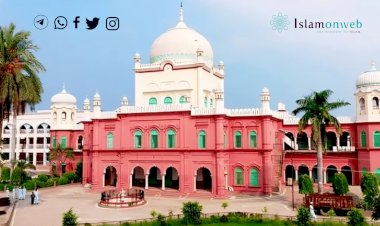
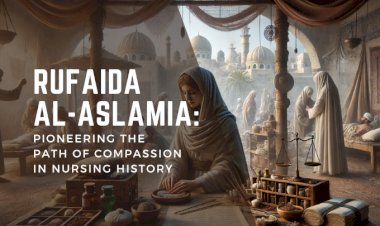
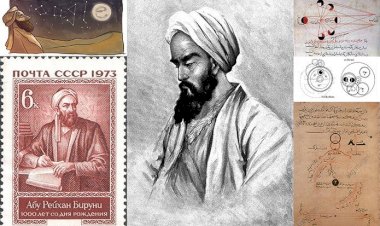
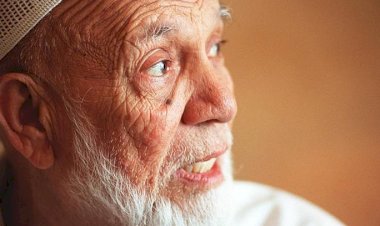














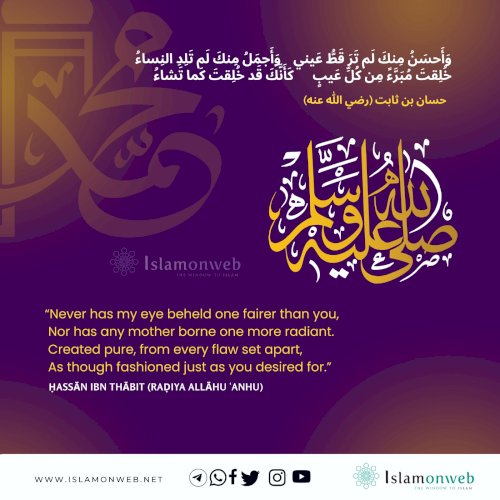

Leave A Comment